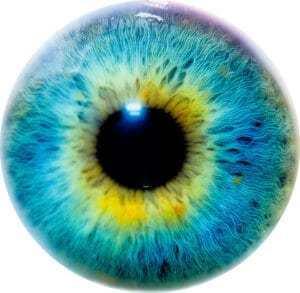
It was late 2014. Gary and I were waiting in his new ophthalmologists exam room when I wondered why is it so many of the superficial siderosis related conditions seem impossible to pronounce without a medical degree? Silly I know, but I'm never clear what the actual pronunciation is. The doctor comes in talking and I think, wow, that's not even close to how I imagined it. This time Gary's neurologist cleared up the pronunciation question.
A curious word describing a condition with some very annoying consequences. Nystagmus is a vision condition in which the eyes make repetitive uncontrolled movements. These involuntary eye movements can occur from side to side, up and down, or in a circular pattern. As a result, both eyes are unable to hold steady
 Photo by Tom Tolkien
Photo by Tom Tolkien Nystagmus may be accompanied by unusual head positions and head nodding in an attempt to compensate for the condition. Nystagmus can be inherited and appear in early childhood or develop later in life due to an accident or illness. Generally, nystagmus is a symptom of some other underlying eye or medical problem. However, the exact cause is often unknown.
Persons with nystagmus may experience reduced visual acuity. They may also have problems with depth perception that can affect their balance and coordination. Nystagmus can be aggravated by fatigue and stress.Most individuals with nystagmus can reduce the severity of their uncontrolled eye movements and improve vision by positioning their eyes to look to one side. This is called the "null point" where the least amount of nystagmus is evident. To accomplish this they may need to adopt a specific head posture to make the best use of their vision.
The American Optometric Association
Gary's vision began to be a concern in 2015 when both his ophthalmologist and neurologist strongly suggested he stop driving. Eight months prior to this ophthalmology appointment we didn't have a name for his vision problems. First he began to experience problems judging distance and his pupils would constrict down to pin top size or dilating to different sizes. (Different sized pupils is a condition with an equally hard to pronounce name-Aniscoria) Focusing on print took an incredible amount of effort. Our neurologist discovered his eyes no longer track in tandem.
His initial ophthalmology exam in 2014 showed his reading vision was worse than six months prior. He had the early signs of age-related cataracts, was high-risk for Macular Degeneration, and a severe problem with dry eyes. She gave him samples of Refresh eye lubricant for daytime use and suggested the ointment form in both eyes before going to bed at night. We scheduled his return in six months with the hope his vision problems wouldn't continue to decline.
Update December 2019
Gary is now under the care of his third ophthalmologist. His vision has progressively declined over the years. To read more about Gary's superficial siderosis related vision symptoms check out When Your Eyes Have A Mind Of Their Own.
.

